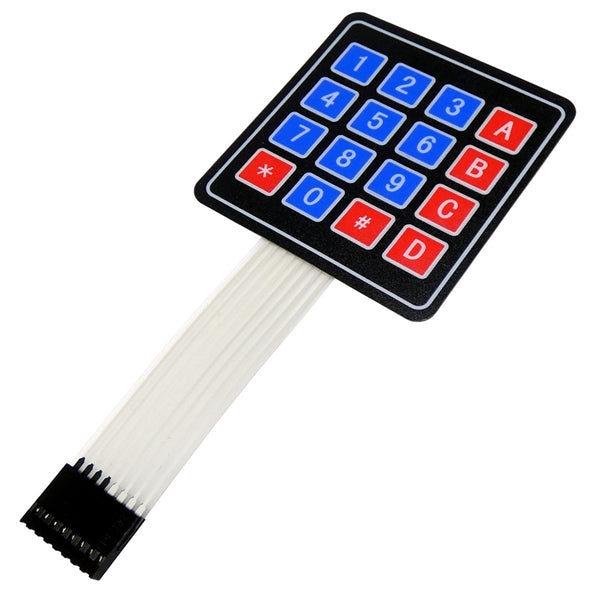Everything About Membrane Change: Understanding Its Layout and Performance
When you assume regarding the control user interfaces in contemporary tools, membrane layer switches typically come to mind. Allow's discover what sets membrane layer switches over apart from other control systems.
What Are Membrane Buttons?

Membrane layer switches can additionally be tailored regarding shape, dimension, and graphics, permitting suppliers to produce unique user interfaces customized to specific items. Generally, membrane layer buttons play a significant function in enhancing user experience across a large variety of applications.
How Membrane Layer Changes Work
When you push a trick on a membrane layer switch, it activates a simple yet efficient system. The leading layer, frequently made of versatile material, pushes down onto a conductive layer below it. This activity bridges the gap in between conductive traces, completing an electrical circuit. As soon as the circuit closes, it sends a signal to the gadget's controller, which translates your input.
You'll observe that the responsive comments differs based upon the button design, providing either a soft click or a more obvious response. As soon as you release the key, the membrane layer go back to its original position, reopening the circuit and quiting the signal. This procedure happens almost instantly, guaranteeing a responsive individual experience.
Membrane layer switches are popular as a result of their durability and resistance to dust and moisture, making them perfect for numerous applications, from household appliances to medical gadgets. Understanding this operation helps you value their prevalent use.
Key Components of Membrane Layer Buttons
Recognizing the crucial elements of membrane layer buttons is essential for realizing their performance and design. The safety layer shields against environmental factors and put on, expanding the button's life-span. By understanding these parts, you'll acquire understanding right into how membrane layer switches over run and their value in different applications.
Materials Used in Membrane Change Style
The efficiency and durability of membrane switches over greatly depend upon the products utilized in their design. You usually experience polyester and polycarbonate as primary substrates as a result of their excellent stamina and flexibility. These materials stand up to scrapes and chemicals, making them perfect for demanding settings.
The conductive layers frequently make use of silver or carbon, picked for their integrity and conductivity. membrane switch manufacturer. Silver gives superior efficiency, while carbon is a cost-efficient alternative. For the overlay, you could consider a matte or shiny surface, depending on your aesthetic needs and individual experience
Adhesives play an important duty as well; they bond layers safely and ensure longevity. Make specific to choose adhesives that stand up to ecological elements like temperature level and moisture. Lastly, don't forget the value of an excellent printing technique for graphics, as it enhances both functionality and aesthetic charm. Selecting the best materials will guarantee your membrane layer switch stands the test of time.
Design Considerations for Membrane Layer Buttons
While creating membrane switches, it's crucial to take into account numerous variables that affect their capability and individual experience. Beginning by concentrating on the format and button dimension; make particular they're intuitive and simple to navigate.
Do not overlook the visuals design; clear labeling and shade contrast are significant for visibility. Confirm your design suits ecological elements, like dampness or temperature level variants, which could influence performance. Finally, keep in mind from this source the significance of testing prototypes with genuine users to collect comments and make necessary modifications. This iterative process aids you improve the layout, validating it fulfills both useful and visual requirements successfully. By very carefully thinking about these elements, you'll create a membrane layer switch that enhances use and contentment.
Applications of Membrane Layer Switches
Membrane switches are versatile components found in various applications, from industrial devices to consumer electronic devices. You'll see their effect in makers that call for long lasting interfaces and in tools that gain from smooth layouts. Comprehending these applications assists you value the capability and practicality of membrane switches in day-to-day modern technology.
Industrial Tools Use
When you're looking to improve the functionality of commercial devices, membrane layer switches supply a trusted service that combines toughness with easy to use design. These buttons are ideal for severe environments, giving resistance to dust, wetness, and chemicals. You'll find them in control panels for producing makers, heating and cooling systems, and clinical tools, where accuracy and responsiveness are crucial. Their low account implies they fit effortlessly right into numerous tools, conserving useful space while preserving simplicity of usage. With customizable graphics and backlighting choices, you can develop an instinctive interface for operators, improving efficiency and safety and security. Plus, their lengthy life-span minimizes upkeep expenses, making them a wise investment for your industrial applications. Accept membrane layer switches to simplify your procedures and boost general performance.
Customer Electronic Devices Integration
In the domain of customer electronic devices, membrane layer buttons play an essential role in enhancing customer interaction and device functionality. Membrane layer buttons additionally guarantee toughness and resistance to dust and wetness, extending the lifespan of your electronic devices. By selecting membrane layer switches, you boost not just the capability however additionally the style of your devices, making day-to-day communications smooth and satisfying.
Advantages and Downsides of Membrane Layer Switches
While membrane switches supply a series of advantages, they also come with some drawbacks that you need to think about. One considerable benefit is their compact design, making them ideal for space-constrained applications. They're likewise economical, giving a sturdy service with a reduced production price. In enhancement, their smooth surface is simple to tidy, enhancing hygiene in atmospheres like medical facilities.

Membrane buttons can have a shorter life expectancy compared to mechanical buttons, especially under heavy usage. They can likewise be less responsive, which might affect user responses web during operation. Stabilizing these pros and cons will assist you figure out if membrane layer buttons are the right fit for your task.
Frequently Asked Concerns
The Length Of Time Do Membrane Layer Changes Normally Last?
Membrane layer switches commonly last in between 5 to 10 years, depending on usage and ecological conditions. You'll want to review elements like wear, direct exposure to dampness, and temperature level fluctuations to determine their durability effectively.
Can Membrane Changes Be Custom-made for Details Layouts?
Yes, you can tailor membrane layer buttons to fit particular styles (membrane switch manufacturer). You'll have the flexibility to pick colors, shapes, and formats that match your job's requirements, ensuring they mix flawlessly with your total aesthetic
What Is the Price Array for Membrane Layer Switch Over Manufacturing?
The price range for membrane button production typically falls between $1 and $10 per system, depending on variables like style complexity, quantity, and materials. You can obtain quotes from makers to locate the very best option.

Are Membrane Switches Over Water Resistant or Resistant?
Membrane switches can be designed to be water-proof or resistant, depending on materials made use of and building approaches. If you require them for damp environments, guarantee you define those requirements during the style process.
How Do Membrane Layer Changes Contrast to Conventional Buttons?
Membrane layer buttons are generally thinner and much more adaptable straight from the source than standard switches, using a sleek layout. They're usually simpler to clean and integrate, yet may not supply the tactile responses you're utilized to with mechanical options.
Final thought
